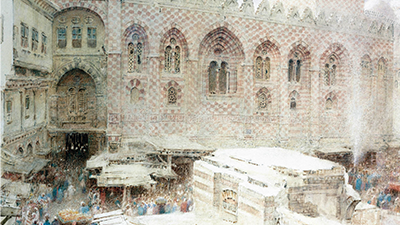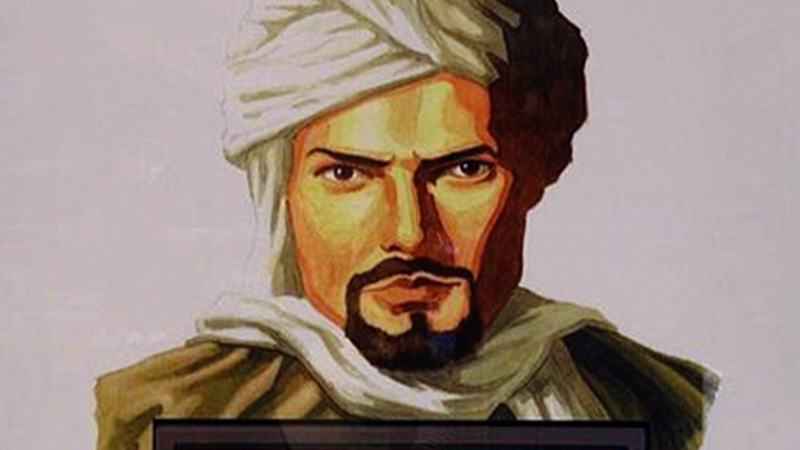The Silk Roads
Teacher Resources
Driving Question: How did the Silk Roads forge connections in Afro-Eurasia?
Learning Objectives:
- Explain the causes and effects of the growth of networks of exchange after 1200.
- Identify and describe a historical context for a specific historical development or process.
Vocab Terms:
- caravan
- commerce
- economy
- empire
- merchant
- trade
- trade network
Opener: The Silk Roads
To teach this lesson step, refer to page 2 of Lesson 2.1 Teaching Guide.
How do students know what to write? Check out this blog post about writing historical essays.
How can you answer a question if you aren’t sure what that question is asking? Practicing prompts promotes quality answers to challenging questions!
Rebuilding the Silk Road
To teach this lesson step, refer to page 3 of Lesson 2.1 Teaching Guide.
Looking for tips on using video in an instructionally sound way? Look no further than the OER Project Video Guide.
Some things are built to last, whether the Roman aqueducts or the Silk Road. Dynasties come and go, but the infrastructure they built can last lifetimes.
-
Guiding Questions
-
Before you watch
Preview the questions below, and then review the transcript.
While you watch
Look for answers to these questions:
- The term Silk Road is commonly used. Why does this video argue that the name is somewhat misleading?
- What were some of the commonly traded items on the Silk Road?
- How did the Han Dynasty “manage” the Silk Road? What were the economic impacts of this management?
- What was the impact of the fall of the Han Dynasty on the Silk Road?
- What is the Chinese Belt and Road Initiative?
After you watch
Respond to the following questions:
- To what extent does this video describe the causes and effects of the growth of networks of exchange after 1200?
- The video says that the Tang Dynasty created a golden age across the Silk Road, starting in 626 CE. However, the Tang Dynasty gained power in 618 CE. What’s going on here? What does this suggest about the effects of collapse and recovery on large networks?
- This video focuses on how the collapse and rise of political states can affect networks and cultural interactions. What are some ways that the expansion or contraction of networks might affect economic systems? Think about the ancient Silk Road as well as modern China’s Belt and Road Initiative.
Key Ideas
Archipelago of Trade
To teach this lesson step, refer to page 4 of Lesson 2.1 Teaching Guide.
For every product traded from place to place, so much more than that product is transported: there are people communicating ideas, cultures coming into contact with one another, and even germs being exchanged!
-
Guiding Questions
-
Before you read
Preview the questions below, and then skim the article. Be sure to look at the section headings and any images.
While you read
Look for answers to these questions:
- Why is the Afro-Eurasian system of long-distance trade described as an archipelago?
- What was the effect of the Mongol Empire on trade?
- What role did this regional trade network play in helping Johannes Gutenberg create his printing press?
- What impact did annual fairs have on the European economy?
- What was one negative effect of interconnected trade?
After you read
Respond to the following questions:
- To what extent does this article explain the causes and effects of the growth of networks of exchange after 1200?
- This article is about economic systems in Afro-Eurasia. Which Afro-Eurasians does it leave out? Whose experiences of trade, production, and distribution are not included in the article?
- Given what you have already learned about the Mongol Empire, do you think the view of the Afro-Eurasian system as an “archipelago” makes sense?
Guilds, Wool, and Trade: Medieval England in a Global Economy
To teach this lesson step, refer to page 5 of Lesson 2.1 Teaching Guide.
Check out this blog post for an interesting connection between medieval European guilds and Labor Day!
Guilds and wool and trade, oh my! You’ll learn all about how Jolly Old (medieval) England was a mover and shaker in the world economy of that time!
-
Guiding Questions
-
Before you watch
Preview the questions below, and then review the transcript.
While you watch
Look for answers to these questions:
- How do Nick and Trevor describe the Afro-Eurasian trade system in the thirteenth and fourteenth centuries?
- Why did people in Flanders and northern Italy buy English wool?
- Who produced wool in England?
- How did the wool trade empower the merchant classes? What role did guilds play in this process?
- Why was wool important for England?
After you watch
Respond to the following questions:
- To what extent does this video support your understanding of the causes and effects of the growth of networks of exchange after 1200?
- English wool is one example of a local good that was traded across extensive regional networks. The trade reshaped both economic systems as well as governance in England and across Western Europe. Can you think of anything that is or was once made in your community? Where does that good get distributed? Who produces it? How does that industry affect your community, and how do you think it impacts other places?
- Think about how you might tell the story of the Worshipful Company of Woolmen differently through the lens of different AP themes. How were they a community? What impacts did they have on economic systems in England and the larger region?
Key Ideas
Source Collection: Networks of Exchange
To teach this lesson step, refer to page 7 of Lesson 2.1 Teaching Guide.
Teachers in our Community Forum are HAPPY to share ideas for analyzing sources. Check out this thread!
Networks of exchange are about so much more than the goods being bought and sold; they are about the diffusion of ideas and the spread of new technology—as well as disease. Use the Quick-Sourcing Tool to help you analyze these primary source excerpts.
Closer: The Silk Roads
To teach this lesson step, refer to page 7 of Lesson 2.1 Teaching Guide.
Check out this thread about the Silk Road Simulation.
Ever wonder what it would be like to be a trader back in the heyday of the Silk Road? Well, wonder no longer as this simulation puts you in the center of the action!




